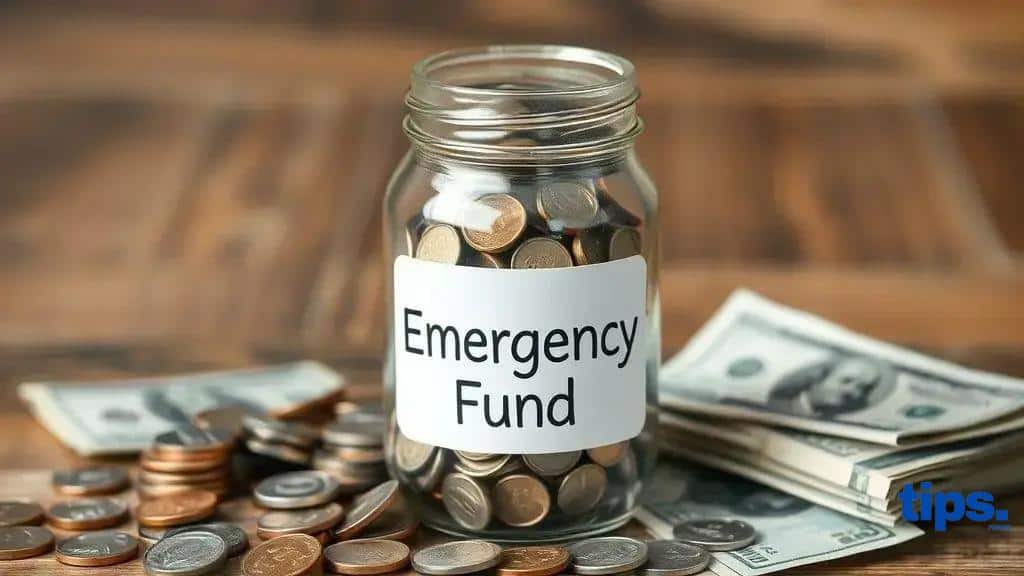Emergency savings plans: your safety net for unexpected costs

Anúncios
Emergency savings plans are crucial for financial stability, requiring at least three to six months of living expenses saved in accessible accounts to handle unexpected costs effectively.
Emergency savings plans provide a crucial financial buffer for unexpected expenses. Have you thought about how having one could change your peace of mind? Let’s dive into why creating one is essential.
Anúncios
Understanding the importance of emergency savings plans
Understanding the importance of emergency savings plans is crucial for financial stability. These plans offer a safety net during unexpected situations, such as medical emergencies or job loss.
Having an emergency savings plan can help reduce stress when facing unexpected expenses. It provides a buffer and allows you to manage crises without relying on credit cards or loans.
Anúncios
Why You Need an Emergency Savings Plan
An emergency fund helps you maintain financial independence. Here are some key reasons to start one:
- Prevents debt accumulation during emergencies.
- Offers peace of mind knowing you’re protected financially.
- Allows you to cover immediate needs without panic.
Consider checking guidelines from reputable sources like the Consumer Financial Protection Bureau to better understand how to build your emergency fund.
How much should you save for emergencies?
Knowing how much to save for emergencies is a vital part of your emergency savings plan. A common rule is to have three to six months’ worth of living expenses saved.
This amount should cover your basic needs like housing, food, and transportation.
Determining Your Savings Goal
To set your savings goal, consider the following factors:
- Your monthly expenses: Calculate your basic living costs.
- Your income stability: If your job is less secure, aim for the higher end of the savings range.
- Any potential unexpected costs: Think about possible medical bills or major home repairs.
Consult resources from the National Foundation for Credit Counseling to find more guidance on setting an appropriate savings goal.
Where to keep your emergency savings

Selecting the right place to keep your emergency savings is essential for easy access and growth. You want your funds to be safe while still being available when needed.
Here are a few good options to consider:
Best Places for Emergency Savings
- High-yield savings accounts: These accounts offer better interest rates than regular savings accounts.
- Money market accounts: They typically provide higher interest rates and easy access to funds.
- Certificates of deposit (CDs): They may offer higher rates, but ensure you choose a short-term CD to maintain access.
It’s wise to avoid keeping your emergency fund in places like checking accounts or in cash, as these options may not earn enough interest. For more information, visit Investopedia and explore various savings options.
Tips for building your emergency savings plan
Building your emergency savings plan is essential for financial security. Here are some practical tips to help you get started.
First, set a specific savings goal. Aim for a target that reflects your monthly expenses.
Essential Tips for Your Emergency Savings Plan
- Start small: Even saving a little each month can add up over time.
- Automate your savings: Set up automatic transfers to your savings account to ensure consistency.
- Review and adjust regularly: Monitor your savings plan and make adjustments as your financial situation changes.
Also, consider cutting unnecessary expenses to boost your savings rate. Look for resources on budgeting and savings strategies at sites like American Psychological Association.
Common mistakes to avoid with emergency savings
Avoiding common mistakes with your emergency savings can help you maximize your financial security. Here are some pitfalls to watch out for.
Many people start with good intentions but falter along the way. Understanding these errors is key to maintaining a solid savings plan.
Common Mistakes to Avoid
- Not saving enough: Many underestimate the amount needed for emergencies. Aim for at least three to six months of expenses.
- Using emergency savings for non-emergencies: Stick to the plan and use funds only for unexpected costs.
- Failing to review your plan regularly: Periodically check if your savings goals align with your financial situation.
For more tips on managing your savings effectively, refer to the guidelines provided by NerdWallet.
Wrapping Up Your Emergency Savings Journey
Building and managing your emergency savings is an essential step towards financial security. By understanding the importance of these plans and avoiding common mistakes, you can prepare yourself for unexpected expenses.
Start by setting clear goals and regularly reviewing your progress. Remember, even small savings can add up over time. With thoughtful planning and dedication, you can create a safety net that supports you in times of need.
Don’t forget to seek guidance from reputable sources to enhance your financial knowledge and strategies.





